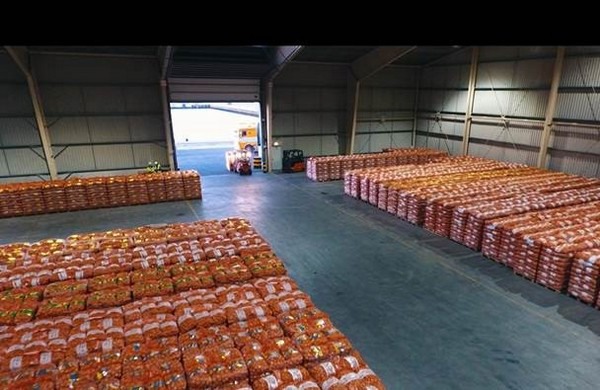The demand for Dutch onions is currently coming mainly from two places - West Africa and the Far East. William Nannes is a buyer at the Dutch company, J.P. Beemsterboer Food Traders. He's noticed a high demand for small sizes, in particular.

Small sizes
"West Africa is drowning in Dutch onions. The markets there reopened for exports. And we sent too much to countries like Senegal, the Ivory Coast, and Guinea-Bissau. Add the adverse weather in Senegal to that. People are also spending less than usual. That's due to the coronavirus and lockdown. All this doesn't paint a rosy picture of the market."
"Congo, further south, is a healthier market. There's a lot of demand for, particularly, small sizes. That's true for countries in the Far East, like the Philippines and Malaysia, too. There's generally great demand for small sizes at the moment. Market traders are, however, hustling. There aren't that many small onions available," says William.
Prices
On the Dutch market, they're far into the seed onions. But you can still occasionally find onion sets. "The onion sets' quality varies. Prices are the only thing that still makes exports attractive. These prices differ vastly from those of seed onions. For example, you pay about €0.10/kg for size 60 - 80 onion sets. For seed onions of the same size, it's €0.17/kg. The little seed onions, the very popular triplets, go for €0.21/kg."
Red onions and India
William believes the Netherlands has too many red onions. However, this week's export ban in India may help get rid of some of the surpluses. "There was a similar situation last year. That created opportunities for Dutch onions. There was sudden demand from unexpected quarters. It seems that will happen again this year," says William.
"India is our salvation. It's sorely needed too. Because of last year's situation, more red onion acreage was added this season. That, while we're actually already on the brink of having too many red onions. India usually sells to the Asian markets. There we can now trade mainly these red, and small yellow, onions. The large yellow onions are less popular because, in that region, China dominates that market."
Reefer containers
With exports, reefer container prices also currently play a role. "There's a shortage of containers going to the Middle and the Far East at the moment. If transportation is too costly, Dutch onions are less attractive too. We often use conventional reefer ships for West Africa. But, these are less attractive for these other destinations. That's for both journey times and the onions volumes we send that way," concludes William.
For more information: William Nannes
William Nannes
J.P. Beemsterboer
17 Station Street
1749 EG, Warmenhuizen, NL
Tel: +31 (0) 226 396 464
Website: www.jpbeemsterboer.nl
